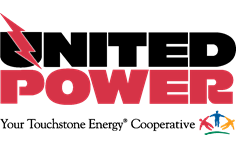Proactive Strategies to Protect Members & Communities
A small neighborhood on the northeast side of the Gross Dam Reservoir in Coal Creek Canyon was evacuated late last summer after a fire erupted at a work site in the community. The Lake Shore Fire damaged at least two structures and burned nearly seven acres before it was contained. Although United Power members were minimally impacted due to the rapid response of local emergency management teams, the close call demonstrates the reality of wildfire risks in Colorado.
October is nationally recognized as Fire Prevention Month, but for the cooperative, every day is an ongoing effort to improve fire mitigation strategies that protect members and communities. United Power debuted its first official Wildfire Mitigation Plan in 2019 to highlight existing programs and guide future initiatives. It directs the cooperative to implement industry-leading strategies and utilize innovative technologies that identify and address risk factors. Like Our Cooperative Roadmap, the plan evolves each year through review and revision, accounting for emerging technology and new data about the service territory.
“A wildfire mitigation plan is essential for any electric utility and is top of mind at United Power,” said Adam Dillon, Vice President of Operations. “Not only does it prepare us for a wildfire event and help protect our communities, it also helps improve our system reliability and keeps us engaged with the communities we serve.”
The single largest element of the plan is its robust and aggressive approach to vegetation management, which includes clearing rights-of-way and increasing accessibility to electrical equipment for maintenance and outage restoration. Clearing overgrowth is critical and removes hazards that could create an ignition or fuel source. The cooperative onboarded a new solution for efficiently scheduling and tracking vegetation management projects called AiDash in 2021. The sophisticated software leverages artificial intelligence with satellite imagery to establish growth patterns and identify risks in real time. The implementation was so successful that AiDash recognized United Power for its impact on wildfire risk reduction.
One of the cooperative’s challenges in wildfire mitigation is serving a rugged mountain territory with difficult terrain for crews to inspect efficiently. United Power recently enhanced its drone inspection program with light detection and ranging imaging — more commonly known as LiDAR — to map high risk areas and conduct line inspections. This imaging helps quickly identify issues so that repairs can be made sooner. The first flights took place late last year with additional focus earlier this summer.
The implementation of AiDash and LiDAR continues the cooperative’s historical trend of reviewing and deploying new technology in innovative ways that improve system resiliency and mitigate wildfire risk. The cooperative has long been an industry leader for its deployment of automated smart devices, which allows the cooperative to quickly restore power during an outage or cut the flow of power during high-risk fire weather. United Power also uses infrared cameras to detect heat signatures at its substations and sensors strategically located in high-risk areas that can detect smoke and gas particulates.
“We are always looking at ways to improve our mitigation plan,” said Travis Rodlin, Mountain Area Manager. “Technology is ever changing. Our use of artificial intelligence may increase as it evolves to improve speed and efficiency of our evaluations and efforts. Hybrid undergrounding is also being researched within the industry, which could benefit areas where undergrounding was not previously cost effective or possible.”
United Power has developed operational procedures, called Wildfire Safety Mode, that are enacted when the National Weather Service issues Red Flag Warnings. These warnings mean the combination of weather conditions — high temperatures, low humidity, and strong winds — increase the risk of fire danger. While in wildfire safety mode, the system will automatically de-energize line segments when foreign objects are detected, and they will remain off until crews have completed a manual inspection. Another inspection is completed after power is restored. This may temporarily increase outage restoration times but substantially increases safety and reduces fire risk.
“Ultimately, wildfire mitigation cannot be the sole responsibility of any single utility,” Rodlin said. “It requires a community-wide commitment. Proactive measures like home hardening, creating defensible space, and property-wide mitigation are essential to help our communities be better prepared. That is why we actively collaborate at the county and state levels and will continue to support local efforts to build a more resilient community together.”
Members can learn more about the cooperative’s Wildfire Mitigation Plan here.

